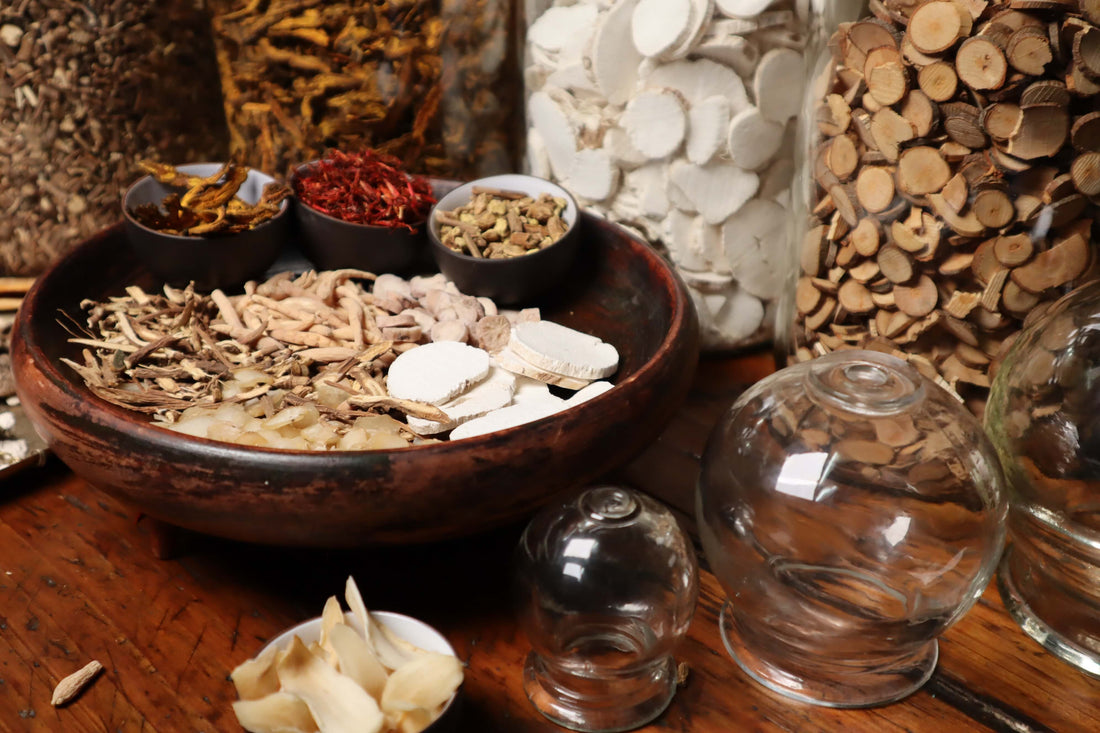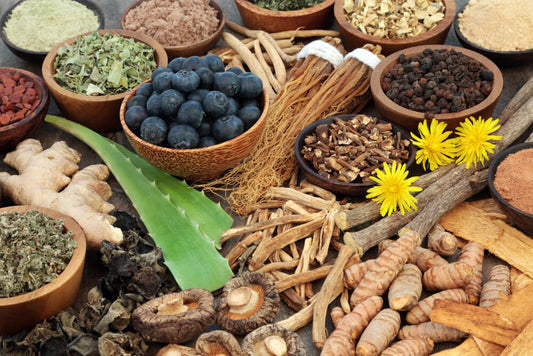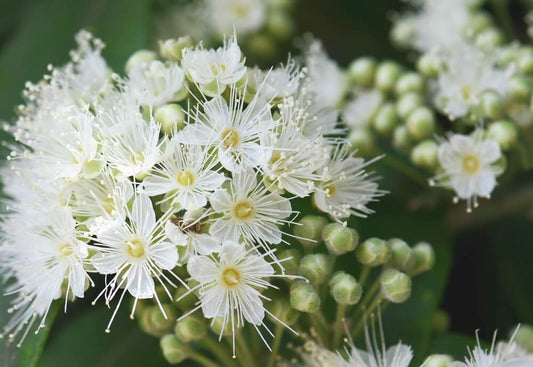
The Role of Superfoods in Traditional Medicine Systems
In the realm of health and wellness, the term "superfood" has gained considerable popularity in recent years.
These nutrient-rich foods have captured the attention of health-conscious individuals seeking natural ways to nourish their bodies and support overall well-being.
While superfoods may seem like more of a modern-day trend, their roots can be traced back to ancient traditional medicine systems that recognised the profound healing properties of certain natural ingredients.
Today, we’re going to delve into the rich history and the integral role of superfoods in traditional medicine systems across cultures.
What is traditional medicine?
Traditional medicine refers to the diverse health practices, approaches, knowledge, and beliefs that have developed over time within different cultures and communities, often passed down from generation to generation. It encompasses a wide range of practices and remedies, such as herbal medicine, acupuncture, massage, dietary practices, and spiritual healing.
Traditional medicine is often based on a holistic approach that emphasises the interconnectedness of the body, mind, and environment. It may also incorporate the use of natural substances derived from plants, animals, and minerals, as well as the manipulation of the body's energy systems.
Many traditional medicine practices are deeply rooted in cultural and spiritual beliefs and are often viewed as part of a broader cultural heritage. While some traditional medicine practices have been validated by scientific research, others have not, and may even be harmful if not practiced properly.
Here are some of the most well-known traditional medicine systems seen throughout the world.
Ayurveda Traditional Medicine System
Ayurveda is a traditional system of medicine that originated in India over 5,000 years ago. It is a holistic approach to health and wellness that focuses on balancing the mind, body, and spirit through various techniques, including herbal remedies, diet and nutrition, exercise, meditation, and massage therapy.
In Ayurveda, health is seen as a state of balance between three primary energies or doshas: Vata, Pitta, and Kapha. Each individual is believed to have a unique combination of these doshas, which influences their physical and mental characteristics as well as their susceptibility to disease. Ayurvedic practitioners aim to identify imbalances in these doshas and use various techniques to restore balance and promote health.
Ayurvedic remedies may include the use of herbs and spices, oils, and other natural substances to address specific health concerns. In addition, diet and lifestyle modifications are often recommended to support overall health and prevent illness.
While Ayurveda has been used for thousands of years and has many followers around the world, it is important to note that not all Ayurvedic remedies are supported by scientific evidence. Some Ayurvedic practices may also be contraindicated for certain individuals or may interact with other medications. Therefore, it is important to consult with a qualified practitioner before using Ayurvedic remedies.
Superfoods in Ayurveda
Ayurveda recognizes a variety of superfoods that are believed to have potent healing properties and can help promote health and vitality. Here are some examples:
- Turmeric: This bright yellow spice is a staple in Ayurvedic cooking and is known for its anti-inflammatory and antioxidant properties. It is often used to treat digestive issues, skin problems, and inflammation.
- Ashwagandha: This adaptogenic herb is commonly used in Ayurveda to help the body cope with stress and anxiety. It is also believed to support the immune system, enhance brain function, and promote healthy sleep.
- Amalaki: Also known as Indian gooseberry, this sour fruit is a rich source of vitamin C and antioxidants. It is often used to boost immunity, improve digestion, and support healthy skin and hair.
- Ghee: This clarified butter is a staple in Ayurvedic cooking and is believed to have numerous health benefits, including improving digestion, promoting healthy skin, and supporting brain function.
- Tulsi: Also known as holy basil, this herb is revered in Ayurveda for its medicinal properties. It is believed to have anti-inflammatory, anti-bacterial, and anti-viral properties, and is often used to treat respiratory problems, allergies, and stress.
- Triphala: This blend of three fruits (amalaki, bibhitaki, and haritaki) is a popular Ayurvedic remedy for digestive issues. It is believed to help promote healthy bowel movements, improve digestion, and support overall health and vitality.
- Moringa: This nutrient-dense plant is rich in vitamins, minerals, and antioxidants. It is often used in Ayurveda to boost energy, support healthy digestion, and promote healthy skin and hair.
These are just a few examples of superfoods used in Ayurveda. It is important to note that while these foods may offer health benefits, they should be used in moderation and as part of a balanced diet. Additionally, it is important to consult with a qualified Ayurvedic practitioner before using any herbs or remedies to ensure they are safe and appropriate for your individual needs.

Traditional Chinese Medicine
Chinese medicine is a traditional system of medicine that has been used in China for over 2,000 years. It is based on the belief that the body is a complex network of energy pathways or channels, and that disease is caused by imbalances in these channels.
Chinese medicine is a holistic approach to healthcare that takes into account not only physical symptoms but also emotional, mental, and spiritual well-being. The practice of Chinese medicine includes various modalities, including acupuncture, herbal medicine, dietary therapy, massage therapy, and movement therapies such as Tai Chi and Qi Gong.
Acupuncture involves the insertion of fine needles into specific points on the body to stimulate the flow of energy and restore balance. Herbal medicine uses a combination of herbs to treat various conditions, and dietary therapy focuses on using food as medicine. Massage therapy, or Tui Na, involves the use of various techniques to manipulate the body's soft tissues, while movement therapies aim to cultivate the flow of energy through gentle movements.
Chinese medicine is based on the theory of yin and yang, which represent complementary and opposing forces in the body. The Five Elements Theory is also a fundamental aspect of Chinese medicine, which describes how the natural elements (water, wood, fire, earth, and metal) are related to specific organs, emotions, and bodily functions.
Chinese medicine has gained popularity in the Western world in recent years, and many people use it to complement conventional treatments or as an alternative approach to healthcare. However, it is important to seek the advice of a qualified practitioner and to inform your healthcare provider of any Chinese medicine remedies or treatments you may be using.
Superfoods in Chinese Medicine
In traditional Chinese medicine (TCM), there is no specific concept of "superfoods" like in Western nutrition. However, there are many foods that are considered to have medicinal properties and can be used to support health and well-being.
Here are some examples of foods that are commonly used in TCM:
- Goji berries: Goji berries are considered a tonic for the liver and kidneys, and are believed to improve vision and nourish the blood.
- Reishi mushrooms: Reishi mushrooms are believed to have immune-boosting properties, and are often used to support respiratory health.
- Chinese yam: Chinese yam is considered a tonifying food that can help improve digestion and support the spleen and stomach.
- Ginger: Ginger is believed to have warming properties and can help improve circulation and digestion.
- Turmeric: Turmeric is considered to have anti-inflammatory properties and is often used to support joint health.
- Lotus root: Lotus root is believed to have cooling properties and can help clear heat and improve digestion.
- Wolfberries: Wolfberries are believed to tonify the liver and kidneys, and can help improve vision and nourish the blood.
In TCM, the emphasis is on balancing the body's energy (qi) and addressing underlying imbalances rather than simply targeting specific nutrients. Therefore, incorporating a variety of nutrient-dense foods into the diet is important for overall health and well-being, rather than focusing on a few specific "superfoods."
Modern times, traditional practices
Chinese medicine and ayurveda have stood the test of time, giving us further insight into how people of yesteryears attempted to live a healthier lifestyle. Now that science and modern medicine have taken a stronghold of people’s habits and daily living, where do these traditional medicine systems stand today?
Both Ayurveda and Chinese medicine are still very much practiced by many, believing in their effectiveness. While some have found traditional medicine to be dubious to an extent, there’s no denying that medicine systems like ayurveda and Chinese medicine have evolved over time to adapt to modern lifestyles and healthcare needs.
The emphasis on personalised medicine (focusing on one’s unique needs); the use of modern technology; the integration of Western medicine; and preventive healthcare are just some of the many ways traditional medicine is still practiced today. Overall, traditional medicine seeks to combine the ancient wisdom of Ayurveda and Chinese medicine with modern scientific knowledge to provide a comprehensive and holistic approach to healthcare.













